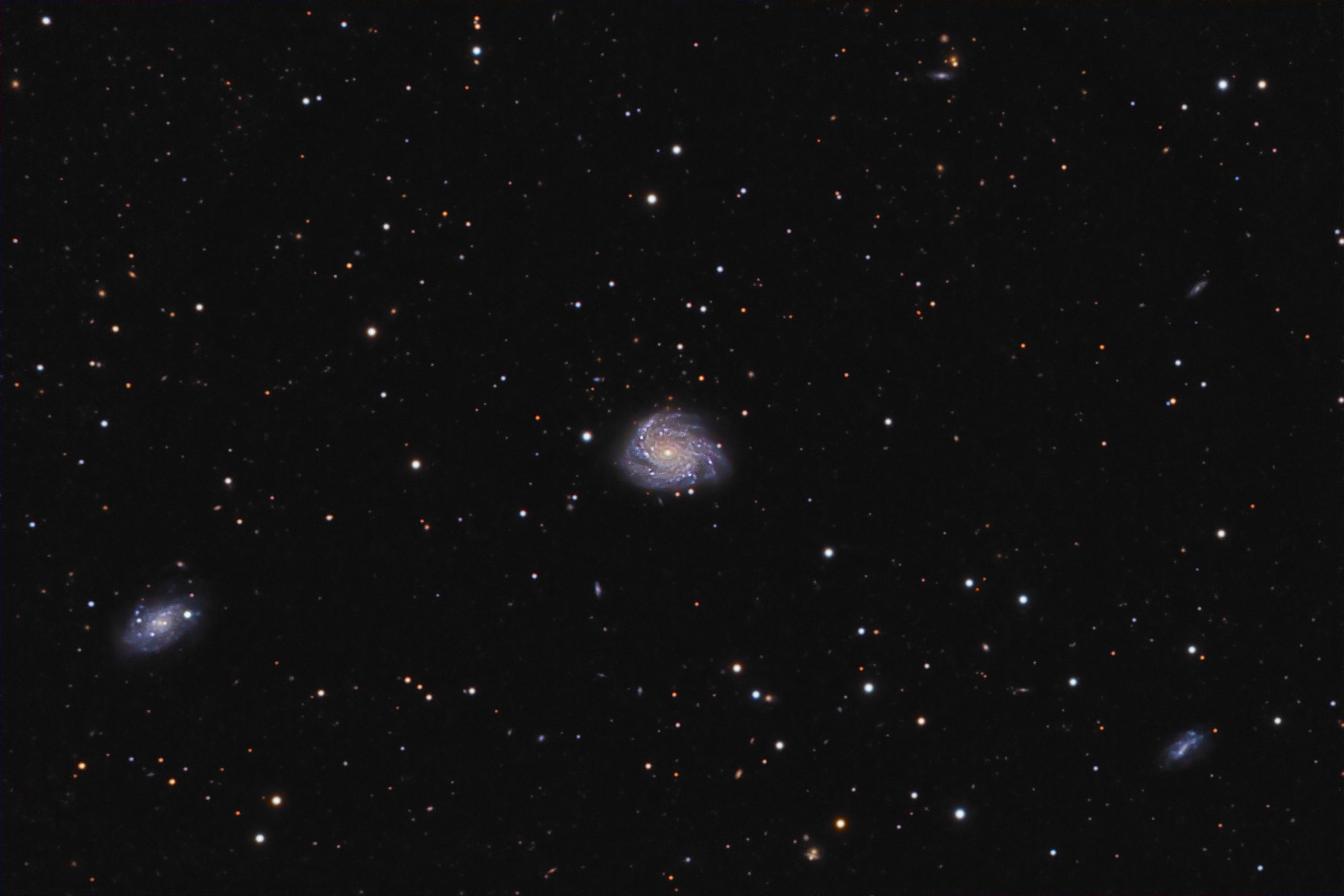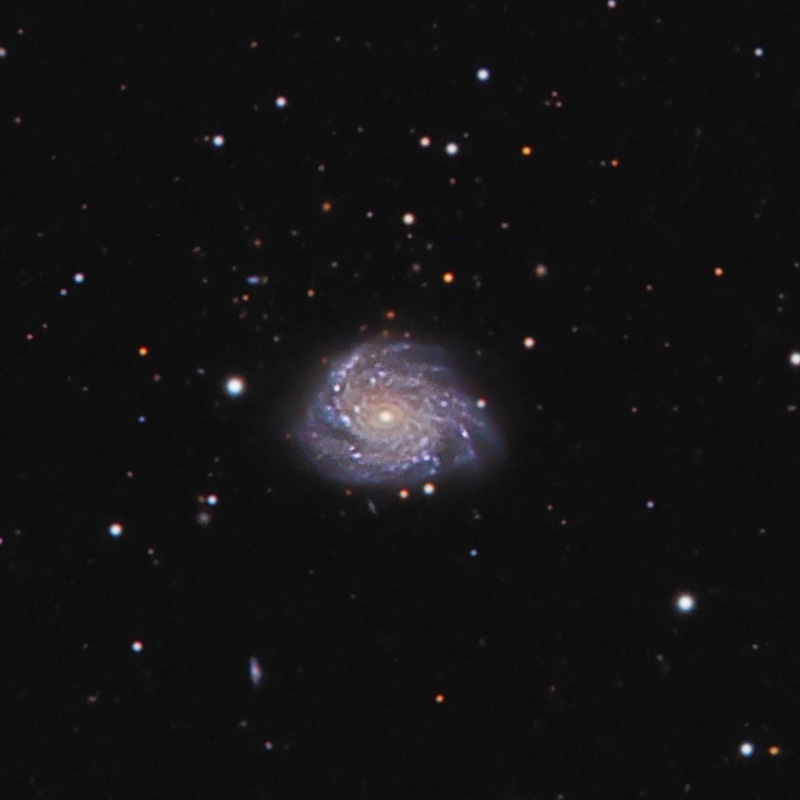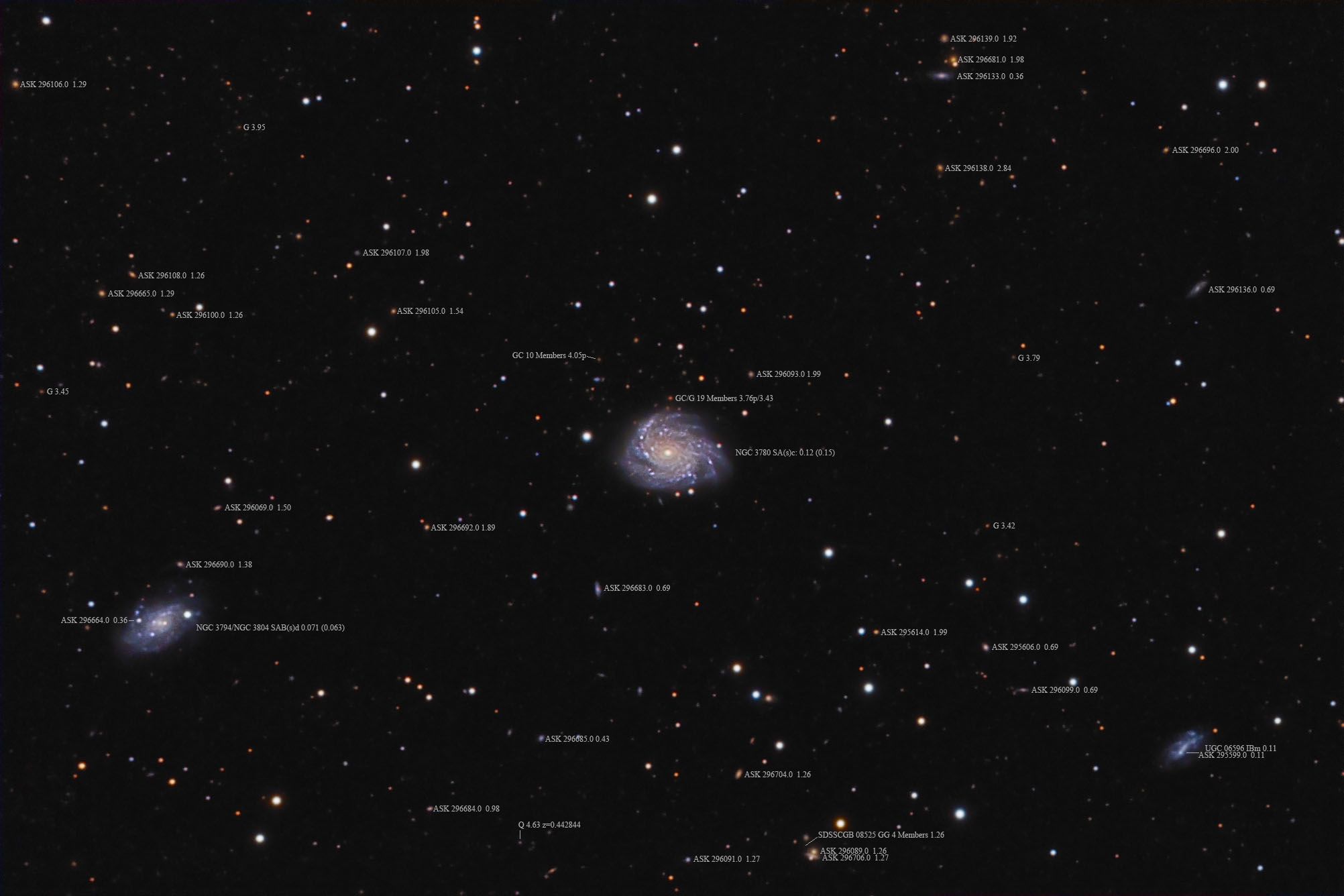Object name: NGC3780Designation(s): NGC3780, NGC3794, NGC 3780 is a many armed spiral often considered by some as similar to M 101. Like M 101 it is in Ursa Major but is in the bowl of the dipper rather than above its handle. It is about 110 million light-years distant by redshift and 150 million by the median of 5 Tully Fisher measurements. Assuming the 110 million light-year distance it is much smaller at about 90,000 light-years across (120,000 if the larger distance is correct). While it is said to have HII regions all are under 1" of arc in size so I didn't pick them up. Like M 101 it is highly unsymmetrical in its shape and spiral structure. NED listed a couple of its knots as separate galaxies, I didn't annotate them even though NED didn't consider them parts of the galaxy. Their redshift was the same indicating they are just star clouds in the galaxy. The galaxy was discovered in 1789 by William Herschel but isn't in either of the two Herschel 400 lists which I find is an odd omission.
To the southeast is NGC 3794 which is also NGC 3804. In fact 3804 is the more correct number. It was discovered twice by William Herschel in 1789 but his position for NGC 3794 was off by 30" of time leading him to not catch his mistake though his descriptions of the two match. This one, being fainter than 3780 also failed to make either Herschel 400 list. In this case NED also points to a bright blob in the galaxy as being a different galaxy. But the redshift puts it 5 times further away so it likely is a separate galaxy. I've noted it in the annotated image.
NGC 3780 was discovered by William Herschel on April 16, 1789. NGC 3794 was discovered by him on April 14, 1789 but RA wrong. He later found it on March 18m, 1790 and got the postion right. Neither he nor Dreyer caught this error so it has a double listing in the NGC.
The third major galaxy in the image is UGC 06596, a rather large irregular galaxy at about the same redshift as NGC 3780 so the two are likely related. It is about 45,000 light-years across making it 3 times larger than the large Magellanic Cloud. Their projected separation is about 475,000 light-years putting it 3 time further away than the large cloud is from our galaxy. I consider it unlikely it is a satellite of NGC 3780 given these figures. It too has a star cloud in it that NED lists as a separate galaxy but this one has the same redshift as UGC 06596. Thus it appears to be just a bright star cloud in the galaxy rather than a separate galaxy. I suppose it is possible that it is something being digested but I rather doubt that. I find nothing on it in the literature to help.
Two galaxy clusters are seen above NGC 3780. I'd have considered this to be one rather than two but apparently two different redshifts are involved. I point the the Bright Cluster Galaxy likely anchoring each cluster. The redshifts of both clusters is photographic so can be a bit iffy. The BCG of the closer cluster however has a spectroscopic redshift putting it, and thus the cluster closer than the photographic redshift would indicate and making more likely these really are two different clusters. I wish there was redshift data for the blue galaxy below the BCG of the more distant cluster. Apparently it is not related to either cluster.
Objects with designations other than those that are just its coordinates are listed by catalog name. Otherwise just by the notation of G for galaxy, GC for galaxy cluster, GG for galaxy group and Q for quasar.
14" LX200R @ f/10, L=4x10' RGB=2x10', STL-11000XM, Paramount ME Related Designation(s):2MASS J11392235+5616144, 2MASS J11405336+5612071, 2MASX J11392237+5616146, 2MASX J11405341+5612073, 2MASX J11405425+5612080, 2MASXi J1139232+561612, 2MASXi J1140544+561207, 87GB 113651.8+563248, ASK 296095.0, CGCG 1136.6+5632, CGCG 1138.1+5628, CGCG 268-070, CGCG 292-014, CGCG 292-019, IRAS 11366+5632, IRAS 11381+5628, IRAS F11366+5632, IRAS F11381+5629, LCSB L0463O, LDCE 0867 NED031, LGG 247:[G93] 001, LGG 250:[G93] 003, MAPS-NGP O_130_0015870, MCG +09-19-150, MCG +09-19-153, NGC 3780, NGC 3794, NGC 3804, NGC3780, NGC3794, NSA 140050, NSA 160302, PGC 036138, PGC 036238, SDSS J113922.35+561614.3, SDSS J113922.36+561614.3, SDSS J113922.36+561614.4, SDSS J114053.41+561207.3, UGC 06615, UGC 06640, UNAM-KIAS 0771, UZC J113922.4+561615, UZC J114054.2+561206, [BEC2010] HRS 065, [M98j] 170 NED04, | | 

